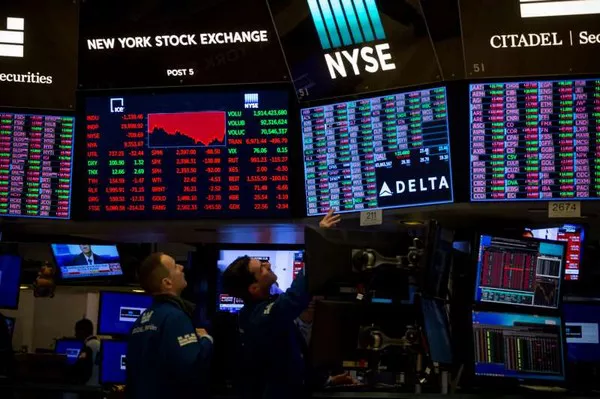In the fast-paced world of cryptocurrency, staying ahead of the curve is crucial for investors and traders. One such avenue that has gained significant attention is Future Trading on Binance. This article will delve into the intricacies of this trading option, exploring what it is, how it works, strategies to thrive, and the ever-evolving landscape of crypto derivatives.
1. Understanding Future Trading on Binance
Future trading on Binance refers to the practice of buying and selling cryptocurrency contracts, where traders speculate on the future price of digital assets without actually owning them. It allows traders to profit from both rising and falling markets, making it a versatile strategy. Unlike spot trading, where you purchase the actual cryptocurrency, in futures trading, you enter into a contract to buy or sell the asset at a predetermined price and time in the future.
2. How Does Future Trading on Binance Work?
Binance offers a robust platform for futures trading, featuring various cryptocurrency pairs and trading options. To begin, traders must deposit collateral, typically in the form of USDT (Tether), into their futures wallet. This collateral serves as margin, enabling traders to open positions with a higher value than their initial deposit – a concept known as leverage.
3. The Power of Leverage and Risk Management
Leverage amplifies potential profits but also increases the risk of substantial losses. For instance, with 10x leverage, a 10% price movement can lead to a 100% profit or loss. Therefore, prudent risk management is paramount. Traders should set stop-loss orders to limit potential losses and use leverage cautiously, especially if they are new to futures trading.
4. Strategies for Success in Binance Futures Market
a. Long and Short Positions: Traders can profit from rising markets by going long (buying) or from falling markets by going short (selling) on Binance futures. Effective analysis and timing are crucial for success.
b. Technical Analysis: Utilizing technical indicators like Moving Averages, Relative Strength Index (RSI), and Fibonacci retracements can help traders make informed decisions.
c. Fundamental Analysis: Keeping an eye on news and events that can influence cryptocurrency prices is essential. Major announcements, regulatory changes, and market sentiment can impact futures trading.
d. Risk Management: Diversify your portfolio, set stop-loss orders, and avoid over-leveraging to mitigate risks effectively.
5. The Evolving Landscape of Crypto Derivatives
The world of cryptocurrency is constantly evolving, and so is the landscape of crypto derivatives. As the popularity of Binance Futures and similar platforms grows, regulatory scrutiny and market dynamics continue to shape the industry.
a. Regulatory Framework: Governments worldwide are increasingly focusing on regulating cryptocurrency derivatives to protect investors and maintain market integrity. Traders should stay informed about evolving regulations.
b. Innovation: Crypto exchanges like Binance are continually introducing new features and trading products to meet the demands of a diverse user base. Keeping abreast of these developments can provide traders with new opportunities.
c. Market Volatility: The cryptocurrency market is known for its extreme volatility. Traders in the futures market should be prepared for sudden price swings and adapt their strategies accordingly.
In conclusion, future trading on Binance is a dynamic and potentially lucrative way to engage with the cryptocurrency market. However, it comes with its own set of risks and challenges. Traders who educate themselves, employ effective strategies, and stay informed about market developments can increase their chances of success in this exciting space. Remember, always trade responsibly and never invest more than you can afford to lose in the volatile world of cryptocurrency futures. Happy trading!
FAQs about what is future trading on binance
1. What is Future Trading on Binance?
Future trading on Binance involves speculating on the future price of cryptocurrencies without owning the actual assets. Traders enter into contracts to buy or sell these digital assets at predetermined prices and times. It’s a way to profit from both rising and falling markets.
2. How do I get started with Future Trading on Binance?
To begin future trading on Binance, you’ll need to create an account on the Binance platform. Once your account is set up, you can deposit funds, typically in the form of USDT (Tether), into your futures wallet. These funds serve as your margin to open positions.
3. What is leverage in Binance Futures?
Leverage in Binance Futures allows traders to control larger positions with a smaller amount of capital. For example, with 10x leverage, you can trade with ten times the amount of your initial deposit. While leverage can amplify profits, it also increases the risk of losses, so use it carefully.
4. Can I go both long and short in Binance Futures?
Absolutely. In Binance Futures, you can go long (buy) to profit from rising markets or go short (sell) to profit from falling markets. This flexibility is one of the key advantages of futures trading.
5. What strategies can I use for Future Trading on Binance?
There are various strategies for success in Binance Futures, including technical analysis, fundamental analysis, and risk management. It’s essential to develop a trading strategy that aligns with your risk tolerance and market analysis skills.
6. How do I manage risk in Binance Futures?
Risk management is crucial in futures trading. You can mitigate risks by setting stop-loss orders to limit potential losses, diversifying your portfolio, and avoiding over-leveraging. Always have a clear risk management plan in place.
7. What are the fees associated with Binance Futures?
Binance charges trading fees for futures contracts, which vary depending on factors like your trading volume and whether you’re a maker or taker. Be sure to check Binance’s fee schedule for the most up-to-date information.
8. Is Binance Futures regulated?
Binance is subject to regulations in various jurisdictions, and they’ve taken steps to comply with local laws where required. However, the regulatory landscape for cryptocurrency exchanges and derivatives is continually evolving, so stay informed about the regulations that apply to your region.


